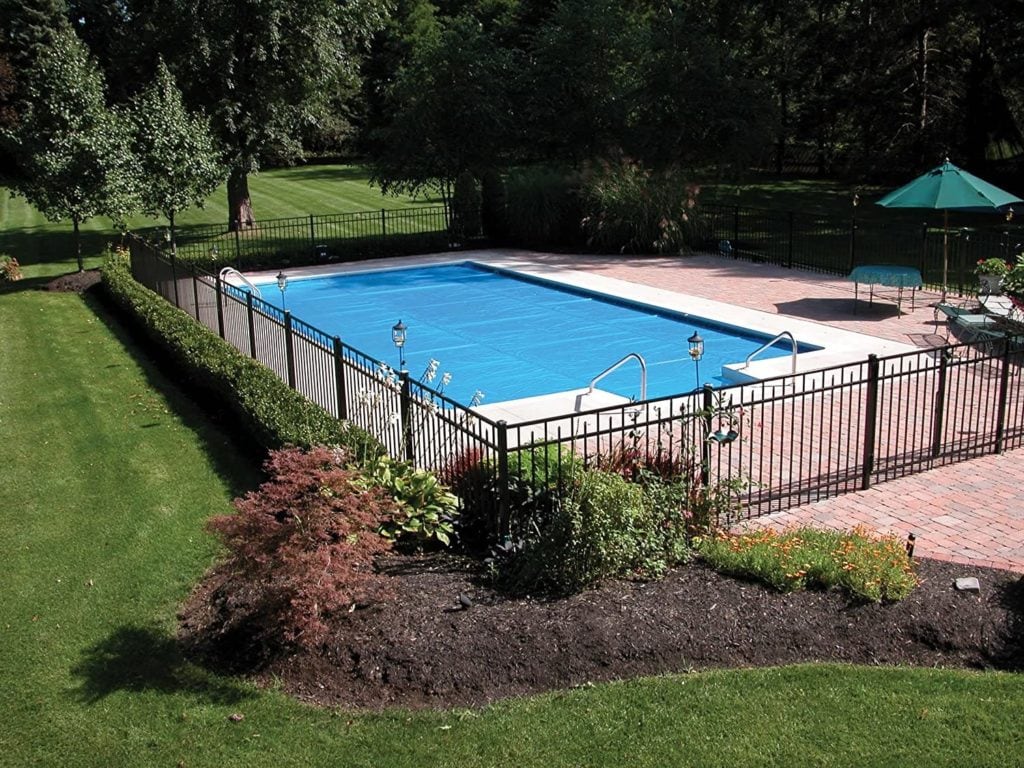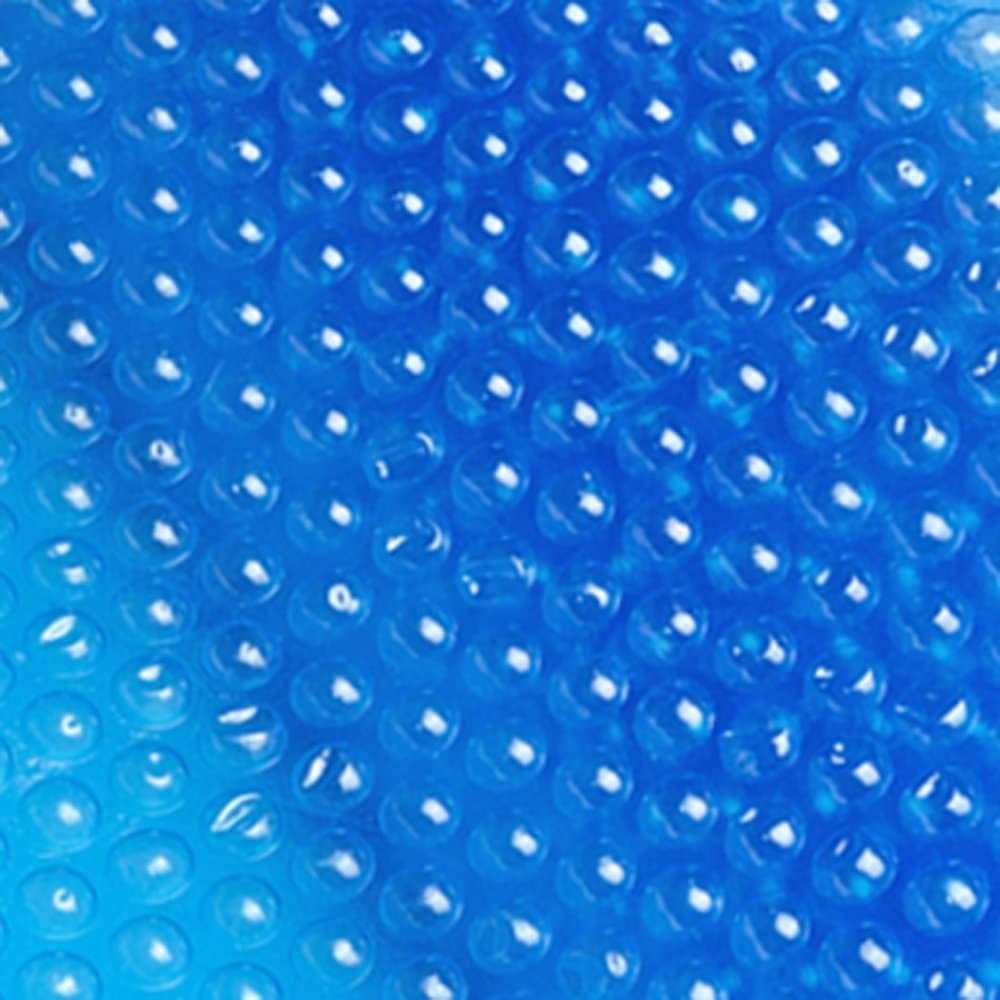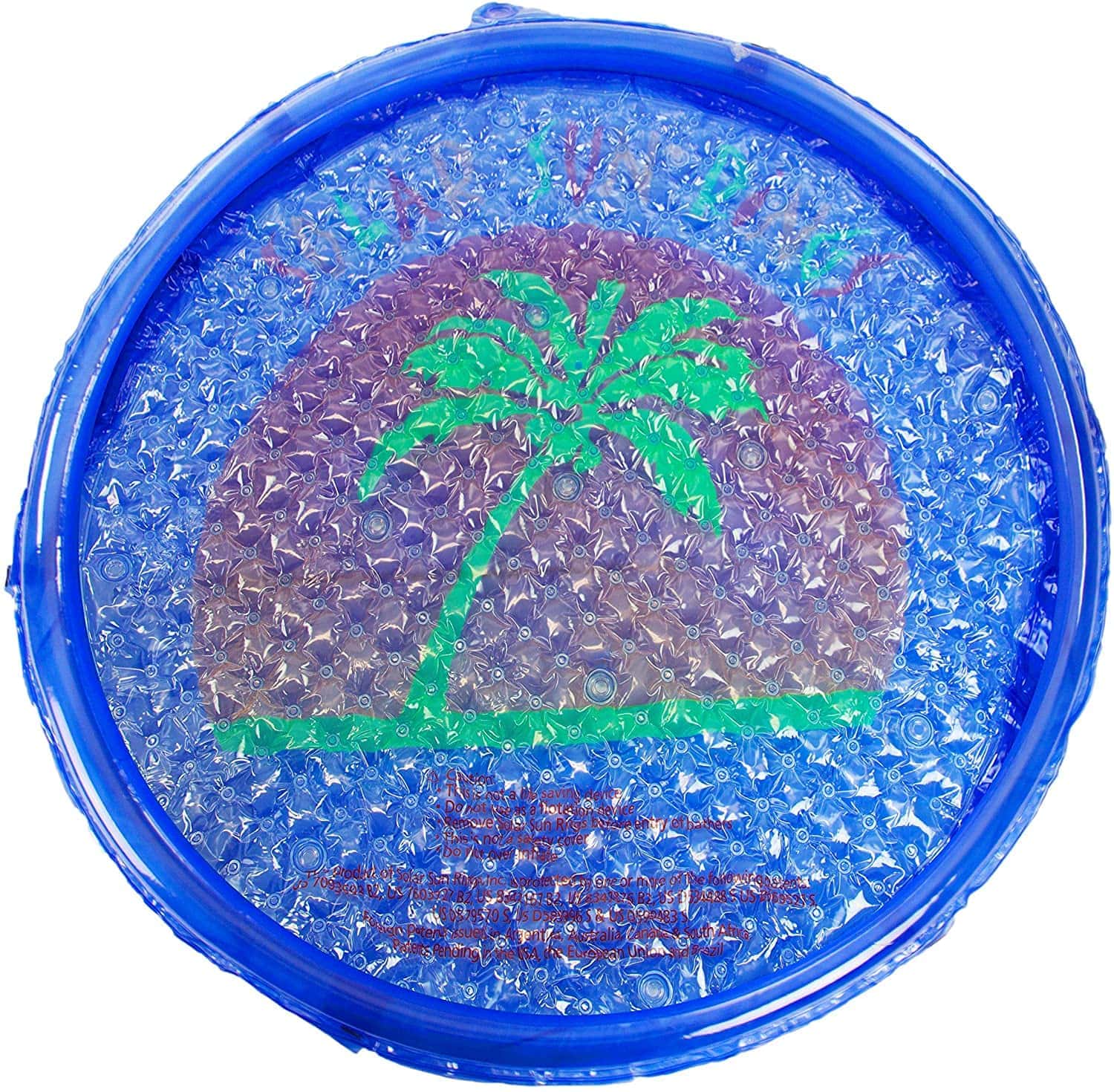How to Heat Your Pool Without a Heater
-
Pete Ortiz
- Last updated:

When most people hear about heating something without a heater, they immediately think of solar heating and solar heaters. They’re half-right. A solar heater is still a heater, a mechanical device using electricity or fossil fuels to heat the water in your swimming pool.
This is about heating your pool without a heater of any kind, solar or otherwise.
That means solar heaters and solar panels are out the window before we even get started. Instead, we’re talking about something else entirely.
What we’re talking about today is a solar cover. According to the Florida Solar Energy Center at the University of Central Florida, a temperature increase of 5º to 10º can be expected from a pool cover. These numbers will vary depending on the type of material, number of hours in the sun, etc., but they’ll be sufficient to give you a ballpark figure about what to expect.
5º may not sound like much but if you’ve ever gone swimming in a cool or even slightly cool swimming pool, the difference between 65º and 70º could be the difference between enjoying yourself and jumping out of the water with your teeth chattering.
There are three types of solar covers; full solar cover, solar pool rings, liquid solar cover.
3 Different Types of Solar Covers
1. Full Solar Cover
Full solar covers, also known as bubble wrap solar covers, are exactly what they sound like. They’re a layer of strong, semi-transparent plastic bubble wrap designed to be used exclusively for heating swimming pools.
You’ll need to get a large sheet of bubble wrap solar cover that is larger than your swimming pool. Stretch it out over the pool and smooth out any wrinkles. Mark the edges of the pool on it with a magic marker of some kind. Then, use scissors to cut along the edge.
When you’re ready to put the solar cover on your pool, lay it so the bubble side is down. The easiest way to spread it and take it up again is to have it mounted on a roller. Leave it in place for several hours each day to absorb solar radiation from the sun. Remove it when it’s time to swim and play, then put it back again at night.
The cover prevents evaporation and traps the heat in the water during the night, much like putting a lid on a cup of hot coffee.
2. Solar Rings
Solar rings are a cheaper version of the solar bubble wrap. The concept is the same – using bubble wrap-type of cover over the pool – but in the form of individual flat circles or rings.
They are lightweight, clear plastic, inflatable disks which are placed on the pool. Some brands offer magnets in the outside ring around each disk. This draws them together and holds them in place. Since they’re smaller than a full pool cover, they’re easier to handle, store, and maneuver.
They’re just as effective as full-sized solar pool covers. According to tests, one ring can save up to 21,000 BTU of heat every day.
You’ll have to inflate them just like blowing up a floating ring for your kids to play on, but it only takes a minute or so for each one. They don’t require very much inflation. How many you should buy will depend on the size of your pool. Most manufacturers recommend you get enough to cover 80% of your pool and you’ll be good to go.
One word of caution, when you take them out of the water don’t store them in the sun. They’ll continue to generate heat and could actually overheat.
3. Liquid Solar Cover
This is one of the more interesting ones. It was patented November 17, 1998, so it’s been around almost twenty years as of this writing. Basically, it’s a microscopic layer of alcohol that floats on top of the water, like oil floating on water. It reduces evaporation, which is a major cause of heat loss in bodies of water, including your swimming pool.
This has been FDA and EPA approved to use in swimming pools, and it’s been approved by the National Collegiate Athletic Association. It won’t hurt your pump, filter, or any of your fittings.
It’s also safe for you, your pets, and children. You probably shouldn’t drink it out of the bottle, but the tiny amount you pour in the pool can’t possibly hurt you even if you swallow a mouthful of pool water while you’re horsing around.
You’ll need to add it to your pool regularly. If you live in an area with a lot of wind, like Chicago, you’ll need to add more of it and more often. If you have a lot of activity in your pool, you’ll also need to add more. Read the package label for full details.
No matter how much you have to add, it’s still cheaper than running a conventional heater to warm the water in the pool. You’ll be amazed and gratified at much warmer your pool can be just by reducing the amount of evaporation from it.
Conclusion
Any of these three methods will keep your pool from losing warmth due to evaporation, and the first two methods will actually heat the pool by 5 to 10 degrees. Regardless of which one is best for your situation, you’ll wind up saving money.
SEE ALSO: 8 Easy Ways to Keep Frogs Out of Your Pool
Contents






